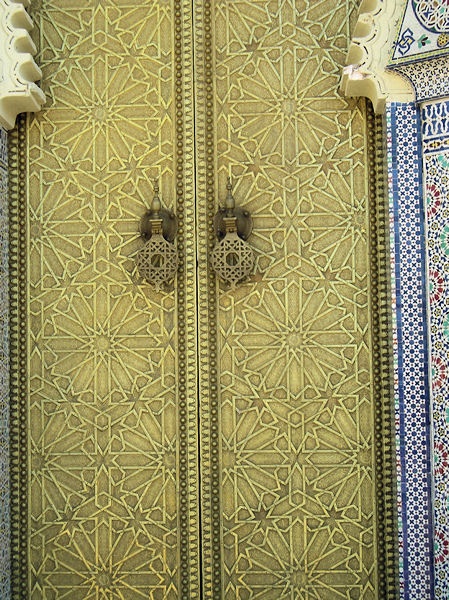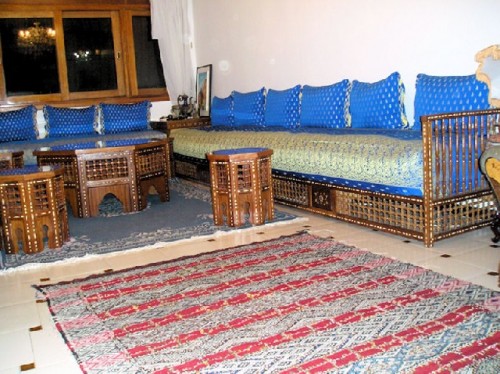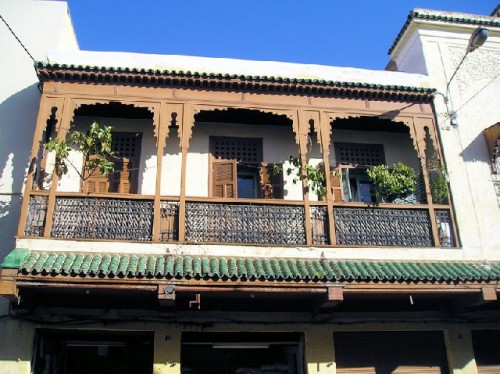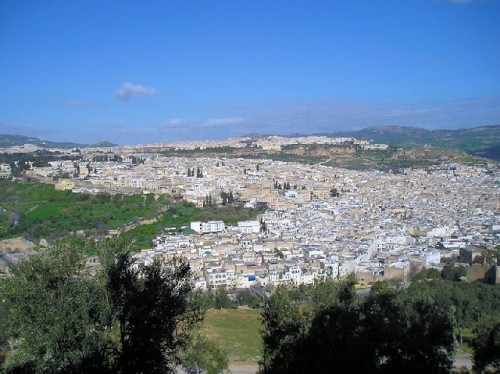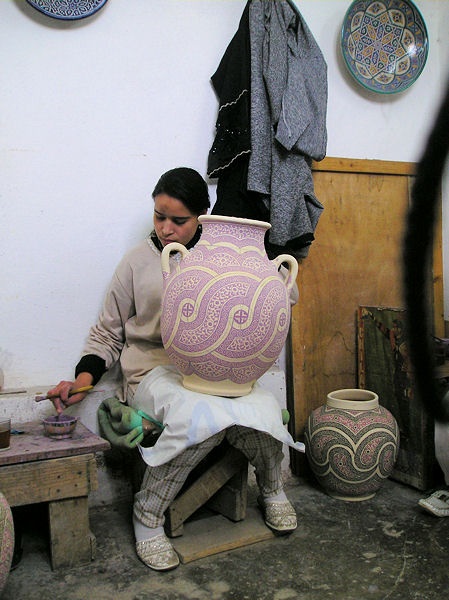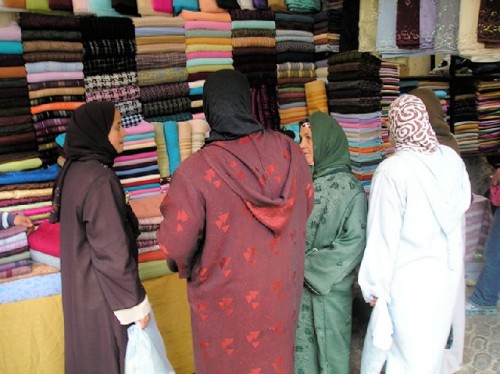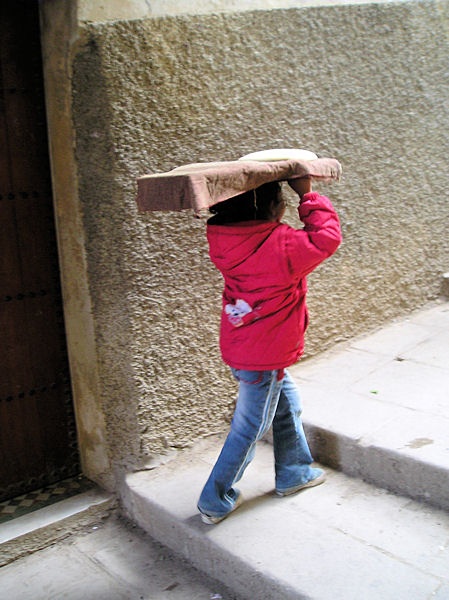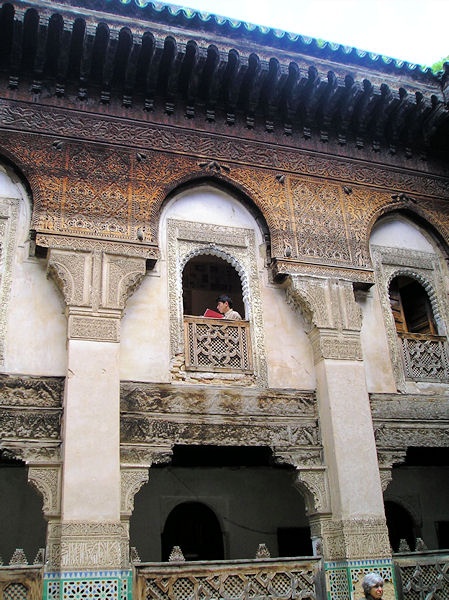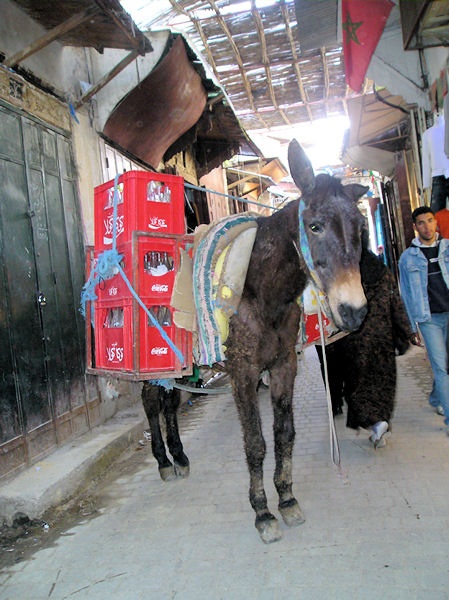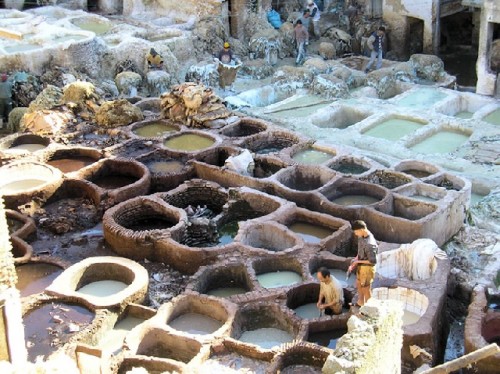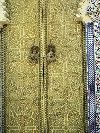Morocco: Part Three
Fez and the Middle Atlas Mountain Villages
By: Zeren Earls - Dec 21, 2007
Fez
The first imperial city, founded in the late 8th century, Fez is Morocco's intellectual capital, home to its oldest university and royal palace. Aziz, proud to show his hometown, invited us to meet his family right away. He lived with his wife, a high school Arabic teacher, and two children nine and six, in a two-bedroom apartment. Furnished traditionally, the living room, with cushioned seats on the perimeters, opened onto the dining room. Coffee tables inlaid with mother of pearl sat near a mirrored Berber rug. We enjoyed mint tea accompanied by homemade sweets and crepes, and joined in the birthday celebration of Aziz's daughter with frosted chocolate cake.
The next day we began with a panoramic hilltop view of the city, the two parts of which are connected by a bridge over the Fez River. We visited the royal palace and explored the Mellah, the old Jewish quarter, before plunging into the Fez medina, the most well preserved medieval city in the world. Designated by UNESCO as a World Heritage Site, the medina is made up four quarters and many sub-quarters, housing 500,000 people within 64 square miles. Entered through nine gates, it is a labyrinth of 9000 crowded alleyways with 850 dead-ends and 600 craft shops. It has 300 mosques. The most often heard word is balek "watch out", as donkeys loaded with goods come through the alleys.
The medresa we visited housed students who studied theology at the university. During their seven-year coursework, this requires rote learning of the Koran; students live in very close quarters just big enough for two to sleep on bunks. We chatted with a couple of Berber students, who appeared happy with their lives compared to home.
Fez is known for its blue ceramics made of gray clay unique to the city. At the ceramic shop we watched potters at wheels, kilns fueled by olive pits, and women glazing pots. Artisans made tables by cutting and chiseling mosaic into small shapes and arranging them into designs as they placed them face down, then pouring cement to hold the pieces when hardened. Finished square, round and half-moon-shaped beautiful tables of various sizes on wrought iron legs of different heights beckoned to be bought.
Following a visit to a carpet cooperative, where we saw both antique and new Berber and Fez rugs, we went to the tannery. On the way we munched on fresh baked bread and picked up sprigs of fresh mint to counter the odor of the tannery. From a bird's eye view of huge vats, we watched goat, sheep and camel skins first soaked in lime, then treated with pigeon droppings as men agitated the solution standing knee-deep in rubber boots, and finally hung to dry. At the end of the day we had seen only one fourth of the medina.
In the evening we split into three groups for our home-hosted meal. Our group of four rode in our host's VW to the complex where he owned a two-bedroom apartment. His wife and three children, a boy and two girls aged two to eleven, met us at the door. Our hostess, in traditional garb with headscarf, offered us mint tea in the living room, while the oldest child, the son, finished his homework with assistance from his father at the computer. Then we gathered around a low table in the dining room for a meal of harira (thick vegetable soup), padiljan (eggplant) and tajine of chicken, which we tore up with our fingers from a centrally placed platter. Eating in this fashion minimizes the number of dirty dishes and is easy to clean up by shaking out the plastic tablecloth cover.
Our host worked as an inspector of Arabic instruction at junior high and high school levels, which required traveling. His wife stayed home with the two-year-old; the older two attended third and sixth grade in a private school. The parents preferred private education because of small classes and early instruction in French and English, which does not start until high school in public schools. The tuition is $150 a month per child plus transportation. Children are in school from 8 a.m. to 12:30 p.m. and again from 2-6 p.m. They come home for lunch. Our enjoyable visit ended with a viewing of framed wedding pictures in the bedroom of this home, otherwise devoid of any wall decoration.
On the way out of town the next morning, we drove through a street lined with trees in bloom with purple flowers to an upper-class residential area of Fez. With villas on both sides of the street, we were able to see another face of Fez outside the medina.
Middle Atlas Mountain Villages
Our first stop was Ifrane, a ski resort called the Switzerland of Morocco. Here people fish for trout and hunt for red-legged hare. The King comes to ski. The town boasts a sculpture of the last lion killed by the French. It was a sunny clear day with snow on the ground and aspen trees all around. Having recently left winter behind, I did not think I would get excited over snow; but I did. It was so beautiful that I took several pictures.
As we continued climbing my ears began popping. We drove past giant cedar forests. The government regulates the cutting of cedar, popular for cabinet making. Snowy veins melted into little lakes; troughs channeled water into fields; whims of geology covered the hillsides and valley slopes with pink and green rocks and rich purple soil. After we crossed a 6000-foot pass in the Atlas Mountains, which divide Morocco into east and west, the landscape shifted to stony land with stubby greenery, and the earth turned red and ochre. Villages of mud houses and square minarets signaled Berber settlements.
The mountains are Berber land, with three different settlements and dialects. Those along the Rif Mountains are the Masbada, which include the Tuareg tribe known as the Blue Men, who used to attack caravans. They speak Tarifite. The Middle Atlas tribes are the Znatu, who have come from Algeria and speak Tachelit. The Senhaja of the High Atlas speak Tamarzit, the Berber dialect spoken throughout the country. Date palms with a life span of 200 years grow at lower altitudes and are harvested by so called date Berbers. The palms have surface roots, pollinate naturally and bear fruit, which ripens in six months. There are 120 kinds of dates among Morocco's four million palms.
The nomadic Berbers judge their wealth by the number of camels they own. These are one-humped camels with a life expectancy of 46 years. They have an 18-month gestation, and their skin gets lighter with age. A white camel is old, which was a revelation to me, since I thought the one I had ridden in Egypt was of a different breed. A camel has a body temperature of 107 degrees; its hoofs adjust to different terrains. They are able to carry twice the load of a mule. All camels belong to someone; none are wild.
On the way we stopped for lunch in Midelt at the Kasbah Asma, the former palace of a ruling family, as opposed to a ksar douar, a dwelling of extended families, such as the one we visited later in Rissani. By now the five layers of clothing I had started out with were down to two. As we headed toward the Sahara, taking in spectacular views of the Ziz Gorges and the Ziz Valley, the air temperature became a function of the sun. When the sun is out, it is hot; otherwise it is cold. The landscape turned into monochromatic shades of brown dotted with oases of date palms along riverbeds of clear water.
Er-Rashidia is a garrison town 160 km. from the Algerian border. In 1975 360,000 people marched here to free the Western Sahara from French occupation. It has a big military presence now because of poor relations with neighboring Algeria, which wants access to the Atlantic Ocean. We drove by upright square stones erected as sand fences to Erfoud, a town at the edge of the Sahara, where we transferred to Toyota land cruisers. Before we started out, we each purchased a long colorful scarf from a vendor, who showed us how to wrap it as a turban. After another hour of riding in four cruisers with four passengers in each, we reached Merzouga, the first of the two campsites of our Sahara adventure. Our day's journey took nine hours with many photo stops.

